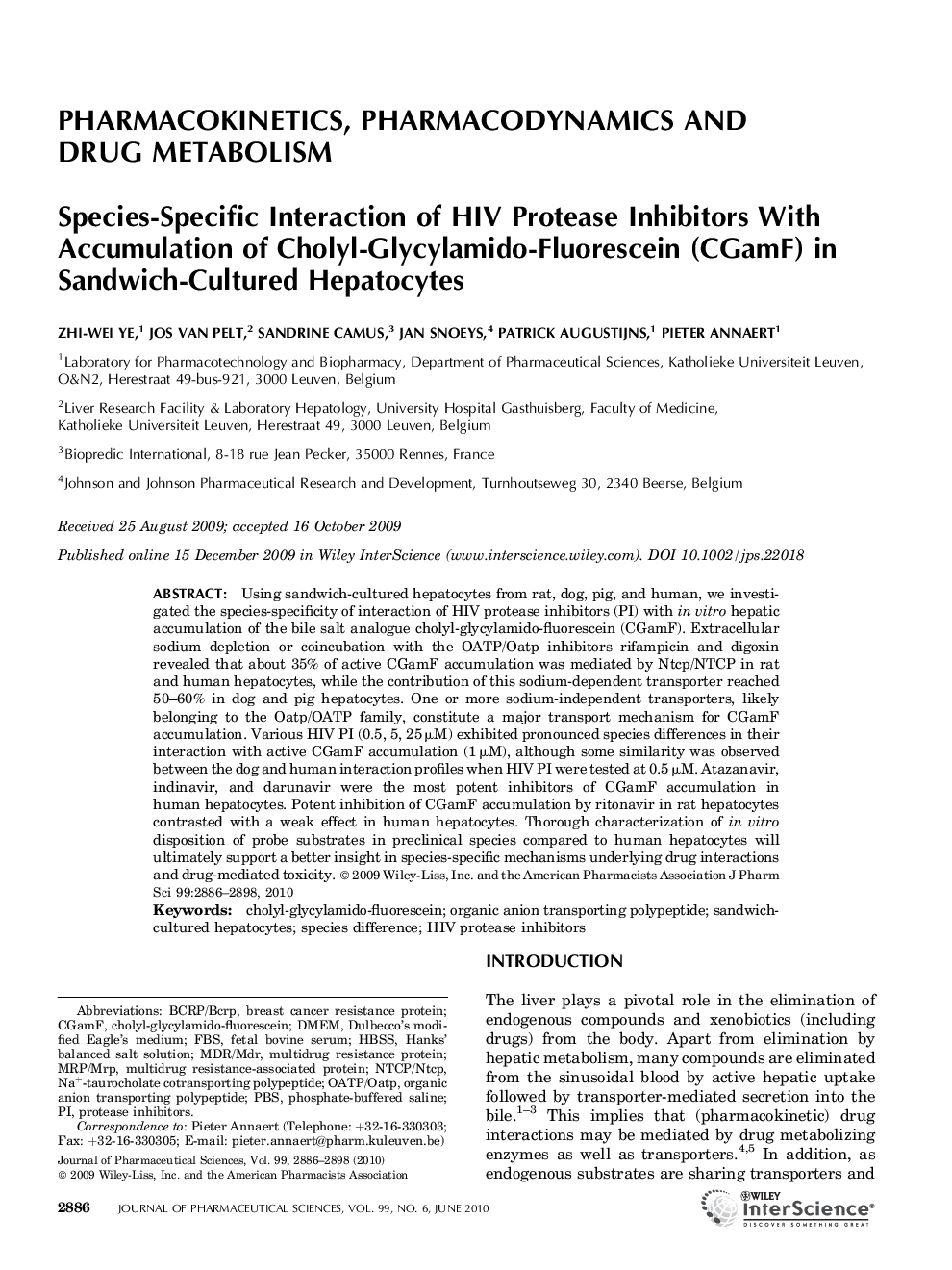| Article ID | Journal | Published Year | Pages | File Type |
|---|---|---|---|---|
| 2485719 | Journal of Pharmaceutical Sciences | 2010 | 13 Pages |
Abstract
Using sandwich-cultured hepatocytes from rat, dog, pig, and human, we investigated the species-specificity of interaction of HIV protease inhibitors (PI) with in vitro hepatic accumulation of the bile salt analogue cholyl-glycylamido-fluorescein (CGamF). Extracellular sodium depletion or coincubation with the OATP/Oatp inhibitors rifampicin and digoxin revealed that about 35% of active CGamF accumulation was mediated by Ntcp/NTCP in rat and human hepatocytes, while the contribution of this sodium-dependent transporter reached 50-60% in dog and pig hepatocytes. One or more sodium-independent transporters, likely belonging to the Oatp/OATP family, constitute a major transport mechanism for CGamF accumulation. Various HIV PI (0.5, 5, 25 μM) exhibited pronounced species differences in their interaction with active CGamF accumulation (1 μM), although some similarity was observed between the dog and human interaction profiles when HIV PI were tested at 0.5 μM. Atazanavir, indinavir, and darunavir were the most potent inhibitors of CGamF accumulation in human hepatocytes. Potent inhibition of CGamF accumulation by ritonavir in rat hepatocytes contrasted with a weak effect in human hepatocytes. Thorough characterization of in vitro disposition of probe substrates in preclinical species compared to human hepatocytes will ultimately support a better insight in species-specific mechanisms underlying drug interactions and drug-mediated toxicity.
Keywords
Related Topics
Health Sciences
Pharmacology, Toxicology and Pharmaceutical Science
Drug Discovery
Authors
Zhi-Wei Ye, Jos Van Pelt, Sandrine Camus, Jan Snoeys, Patrick Augustijns, Pieter Annaert,
